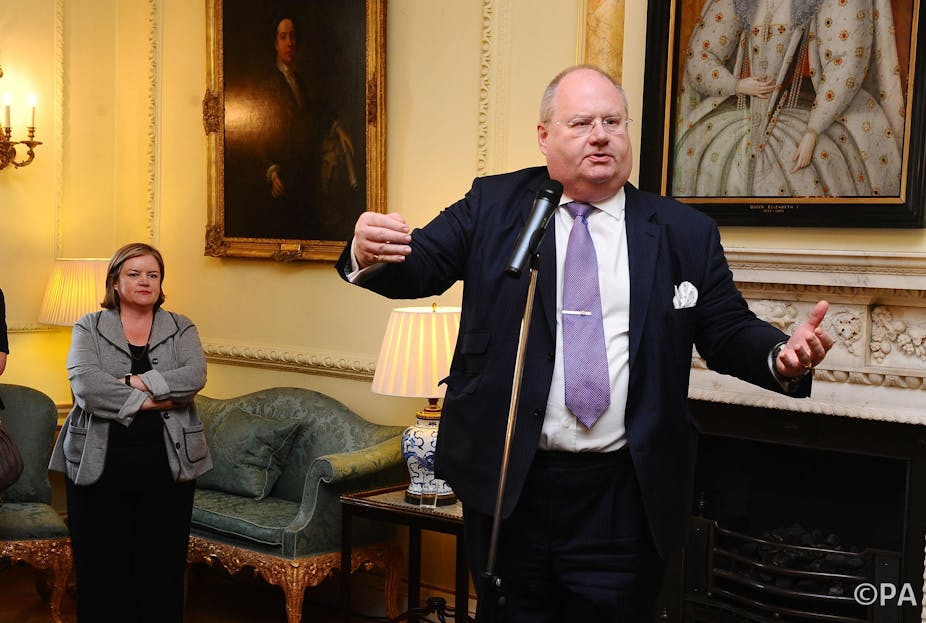The success of the Troubled Families programme in turning around the lives of more than 105,000 families so far while saving taxpayers an estimated £1.2 billion in the process is proof that we can do more with less.
Chief secretary to the Treasury, Danny Alexander in a press release following a statement to the house of commons by Eric Pickles, secretary of state for communities and local government.
This claim relates to the government’s Troubled Families programme, which provides integrated support to families with problems such as anti-social and criminal behaviour, absence from school and unemployment.
The claim can be divided into three assertions: first, that 105,000 families have been turned around. Second, that there has been a saving of £1.2 billion to the taxpayer. And third, as the press release from the Department for Communities and Local Government (DCLG) stated, that these savings come from an investment of £448 million, implying good value for money.
The first point to make is that most of the figures are estimates: it is very difficult to be certain about the precise numbers due to a lack of data and the complexity of the measures involved. The question is therefore how we should interpret these numbers, and whether they are reasonable.
Local authorities reported in February 2015 that they had worked with 118,000 families since the programme was launched in 2011, and that 105,000 of them have achieved the targets set out (which trigger payments to the local authority). The targets are things such as reduced criminal convictions or better attendance at school. These are self-reported figures, so there might be some optimism on the part of local authorities, in order to obtain the payments. And improvements are usually measured over six months or a year, so it is not clear if this means the family has really “turned around”.
The £1.2 billion figure comes from an estimated saving of £11,200 per family, multiplied by the 105,000 families. The £11,200 figure comes from many small improvements (for example, reduced numbers of Anti-Social Behaviour Orders (ASBOs), hospital out-patient visits) each with an estimated value (£7,805 for an ASBO, £129 for a hospital visit).
These individual estimates are based on evidence from seven “exemplar” authorities, but they are averages and may not reflect the nuanced circumstances of every “troubled family”. Five of the authorities have made an average saving of around £6,000. Only Salford (£18,000) and Staffordshire (an astonishing £45,000) made a saving of over £11,200. In my calculations, I have not been able to recreate the same average figure as in the report (mine comes out higher) but there may be some adjustment I am unaware of. Staffordshire’s saving is out of an original spend of £50,000 and seems extraordinarily high, so this might be biasing the result.
It is unlikely that the cash saving to taxpayers is £1.2 billion, especially in the short term, as the latest report published by the Department for Communities and Local Government admits: “In most cases, the estimated fiscal benefits are based on changes in demand for reactive public services, […] rather than necessarily resulting in cashable savings”. The resources saved are instead likely to be used in other instances of service provision.
It is true that the government has pledged £448 million to support the programme. But in a previous DCLG report giving guidance on the programme, this is described as “alongside the money that councils are investing” and “around 40% of the estimated costs” which are around £10,000. The precise investment that generates the return of £1.2 billion is therefore unclear. The press release states that the average cost of intervention was £5,493, implying local government added about £1,500 to the government’s £4,000 contribution. This does not match up with the 40% figure above, so the picture is confused.
Verdict
There is not enough evidence to determine if the government’s claim is correct. It is true that 105,000 families have been helped in some way, and I have calculated that the government has contributed about £400 million so far, out of the £448 million promised. While the resource savings might be of the order of £1.2 billion, there is still a great deal of uncertainty around this estimate.
Taxpayers are unlikely to have saved £1.2 billion, since many of the savings have not directly resulted in cash savings, but have continued to be spent on other services. The picture is further blurred by the fact that local authorities have been squeezed financially, and have had to make economies across the board. It is very difficult to disentangle these savings from those due to the Troubled Families programme.
Review
The author makes three points. First, the number of families “turned around” refers to families who, according to local authorities, have achieved a defined set of short-term outcomes. Local authorities have a clear financial incentive to report positive outcomes. Second, the methodology used to produce average and overall savings figures is not robust (indeed there are some clear discrepancies). Third, reductions in spend on individual families are unlikely to translate directly to cashable “savings”. The conclusion, that “savings” from the programme are highly uncertain, and there is not enough evidence to substantiate the government’s claim, is valid.
An additional important point, not mentioned, is that, conceptually, it is only possible to evaluate the savings resulting from a programme intervention if a counterfactual – what would have happened, and hence what would have been spent, in the absence of the programme – is specified. The government’s analysis ignores this point, explained here.
Click here to request a check. Please include the statement you would like us to check, the date it was made, and a link if possible. You can also email factcheck@theconversation.com

